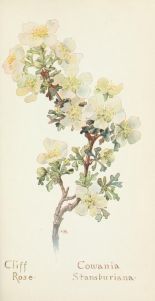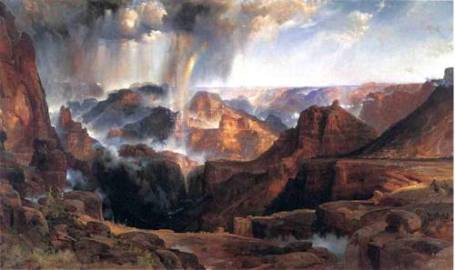- A eulogy for what the landscape once was
- Arches National Monument: Abbey wants to reject human associations with the environment
- The arches are created by gravity and snow erosion, the plateaus and monoliths appear chaotic, but are methodically formed–idea of nature organizing beyond human comprehension
- “In color they shade from off-white through buff, pink, brown and red, tones which also change with the time of day and the moods of light, the weather, the sky.”
- Rich description, sounds like a painting

Delicate Arch inspires a “reawakened awareness of the wonderful”
- Sensorial experience: “few noises which break the sensation of absolute silence,” enhances awareness of perspective, feels timeless
- April: a red sand storm “Time of the red eye, the sore and bloody nostril” p.16
- “I’m a humanist; I’d rather kill a man than a snake”
- captures snake to control mice, lets it share his body warmth…only April and Abbey is already taking a turn for the weird

- “Sympathy, mutual aide, symbiosis, continuity.”
- “all living things on earth are kindred.”
- May: gopher snake deserts him, windy
- Flora: Juniper, Cliffrose, Indian paintbrush, Apuncha, Yucca, etc. “but still a rock garden”
- Hopi used Cliffrose bark for mats and sandals, medicine men used it as an emetic (causes vomiting) for patients
- Fauna: rattlesnakes, tarantulas, gopher snakes, ravens, little grey birds, mice, poisonous centipedes, hummingbirds, moths, tiger lizards, kangaroo rats, harvester ants, scorpions, coyotes, deer, mountain lions etc. –hardy well adapted desert animals, many poisonous
- Camping and hunting grounds lead to centuries long over hunting of big predators like eagles, mountain lions, and foxes. “human medling of things” causes imbalance
- Predator Control Agency put a bounty on large predators in order to save livestock: tactics include hunting and dropping poisoned bait.
- The chemical agents also pose threat to humans
- Sees himself as kin with the animals, makes effort not to disturb
- “We are kindred all of us” “Long live diversity, long live the earth!”
Industrial Tourism and the National Parks:
- Large development of Arches, gov’t surveyors visit to build a road.
- multiple national parks in the region developed to become expansive tourist hubs, roads built right through parks, over use occurs
- unnecessary and careless damages and destruction done to land: “the old magic is destroyed”, the Wilderness Protection Act is “illusory” according to Abbey
- Believes it is National Parks services’ duty to ensure land remains wilderness and that it stay untouched and undiminished.
- Politics surround interpretation of 1916 rhetoric regarding gov’t use of parks. Seems to be often manipulated in favor of developers $$$
- Industrial Tourism: a trendy vacation; people escape the city into the wilderness. This business is destructive to the wilderness and creates false pretense that the people have the right to this wilderness and developed accessibility. Seems hypocritical because it harms the ecosystems and land which people seek to admire and escape to ~in comfort~
- aides road building industry and petroleum sales, backed by Congress
- Southeastern Utah, the canyonlands rich in rocks: a tempting source for treasure rock collectors and natural resources. The beauty and abundance almost invites depletion. Rock removal is against national park law.
- Uranium (story of ore mining frontier gone tragic land takes over, sun drug), salt, mining, thorium
- “To me death was a little more than a fascinating abstraction…the denouement of a stage drama.”
- “How can you exploit a man who enjoys his work”–Roy the cattle rancher
- Abbey speaks about the prejudice against minorities in cattle ranching–Mexicans, Indians, Black people fall low in the “American hierarchy”
- Labor in the Utah desert is extremely taxing on the body, pushes beyond its boundaries, the exhaustion catches up
- Abbey spends much time outside to “combat the loneliness” it passes “like a shadow”
- Anasazi Indian lands: remnants of pottery, adobes, petroglyphs, pictographs, abstract and representational, depictions of horned human-like beings
- Jim Krehbiel (art professor) does archaeo-astronomy work of abandoned Anasazi adobes. He describes supernatural experiences. Every single site they encounter aligns with some star or planet formation which passed earth a thousand years ago. Most align to the exact degree of the star alignment and fit carbon dating of the artifacts. They shared thousands of years of history, passed generationally. Each person in the tribe or home group inherited this built knowledge (like a tribe botanist, or astronomer). They depended on each other’s expertise as a unit. Their home constructions aligned with the stars, their windows shed light and cast certain shapes over the picto and petroglyphs. Wildly accurate alignments. It seems their daily efforts to subsist as a tribe depended on the balance and alignment with the cosmos. They believed spirits were amongst them and decided their survival.
- Abbey describes the clash of White America’s industrialization and its deathly impact on American Indians, their struggle with poverty and health. Aside from the direct violence, rapes, and pillaging, the inability to fully adjust makes sense for a group of people who were so attuned to the land’s ecology.
- Tourism and Industrialization brings the original existence and lifestyles of “cowboys and Indians” to an end
- “There is no lack of water here, unless you try to establish a city where no city should be,” the politicians and developers, “they cannot see that growth for the sake of growth is a cancerous madness,” Abbey predicts drought, which comes true roughly 30 years after his publication’s premiere.
- “The desert takes silence on a different deeper dimension. The sound of nothingness? ‘In the desert,’ wrote Balzac, somewhere, “there is all and there is nothing. God is here and man is not.”
- mentions the white privilege associated with cultural anthropology
- p. 207 description of rainy season in the canyonlands seems much like the western expansion paintings of sublime nature.

Chasm of the Colorado, Thomas Moran-if I remember correctly Moran never once made it to the SW to see the site of his paintings. They were made from sketch, description, and fantasy
- Abbey and team recover the body of a tourist “His departure makes room for the living…A ruthless, brutal process–but clean and beautiful.”
- “Balance, that’s the secret. Moderate extremism. Best of both worlds.”
- “How difficult to imagine the place without a human presence. How necessary.”
- Imagines a post-apocalyptic world (caused by human chemical warfare): believes the desert will prevail and remain the same as a hearty landscape. Even plant life will return.
- “The desert will still be here in the spring. Then here comes another thought. When I return will it be the same?”